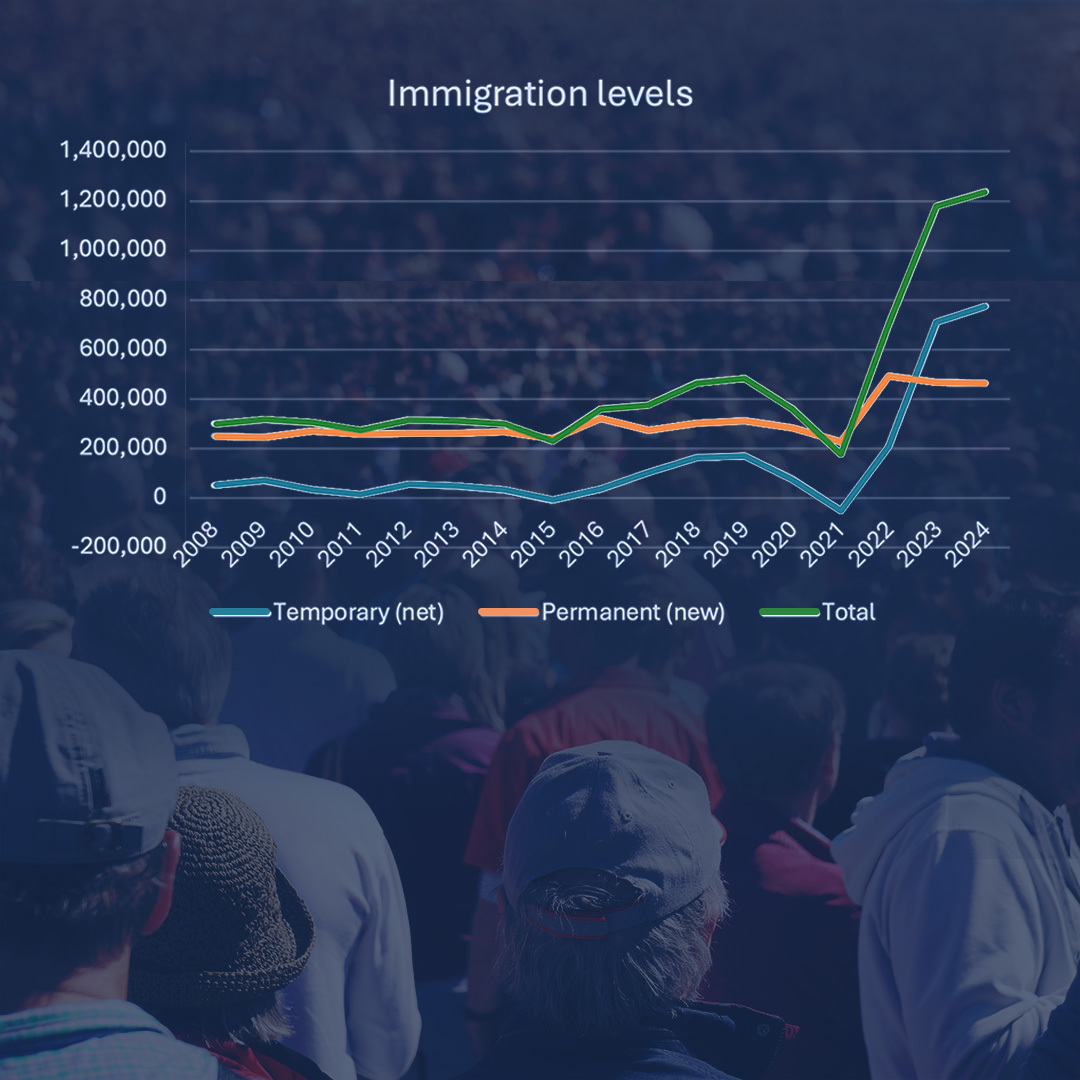
As this chart shows, after many years of having a net migration into Canada of roughly 300,000 per year, in the last few yearsthe total skyrocketed to four times that level.

Yes Alberta’s growing economy has always benefited from people with skills and a desire to get ahead coming here to work. Whether they come from elsewhere in Canada or internationally, new Albertans have had a welcome here as warm as anywhere in the world.
But growth brings pressures as well as opportunity. When the federal government triples or quadruples the number of temporary immigrants it is too much to absorb. In terms of housing alone we are inviting a crisis – new starts on housing fell last year to 245,000, despite 1.2 million new residents arriving the year before. That drives up prices and limits availability.
It also increases unemployment rates when the government brings in people faster than we can create jobs. This affects young Canadians in particular – youth unemployment numbers are double the overall unemployment rate in Alberta.
Canada needs to get back to the points-based system and bring the skilled immigrants we need. The question is, while we wait for change in Ottawa, should Alberta take measures to prioritize the workers our economy needs? If so, what?
Alberta already limits some benefit programs only to citizens and permanent residents. Disability benefits like FCSD, PDD, and AISH are examples.
Temporary residents are also already ineligible for most housing supports.
Health care insurance and income supports would be the most prominent examples that would be restricted to citizens, permanent residents, and those with permits approved by the Government of Alberta.
Yes, last fall they announced they were lowering their target for new permanent residents from 500,000 to 395,000 this year and slight decreases after that. That number of permanent residents is still 50% higher than the average from 2008-2015.
That does not count temporary residents like those with student visas and Temporary Foreign Workers (TFW). Ottawa announced measures to reduce the numbers there too, but given 700,000 temporary residents were approved in each of the last two years (more than 10 times what we saw before 2016), there is a long way to go.